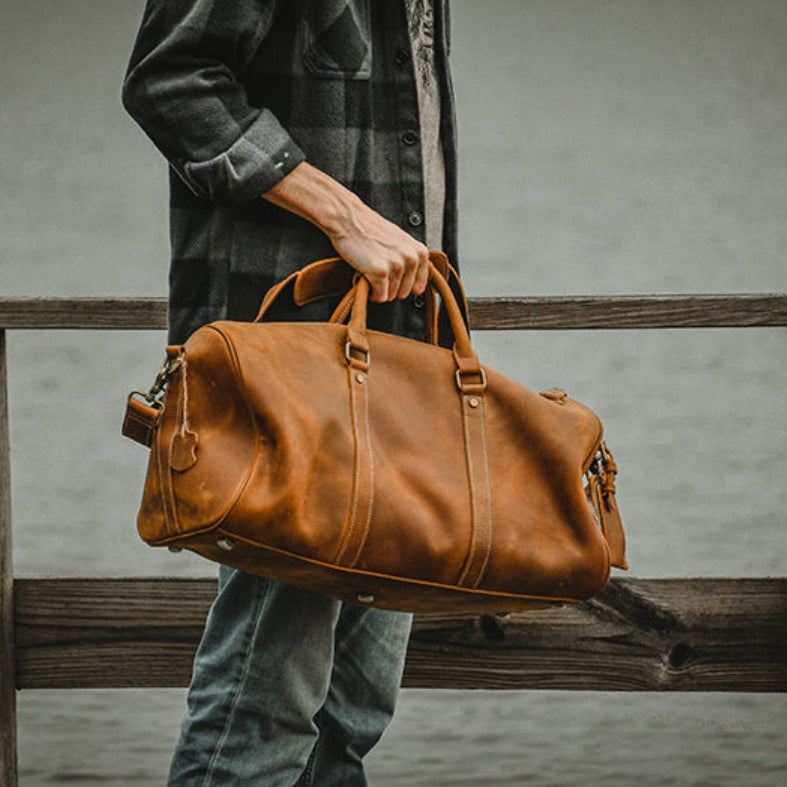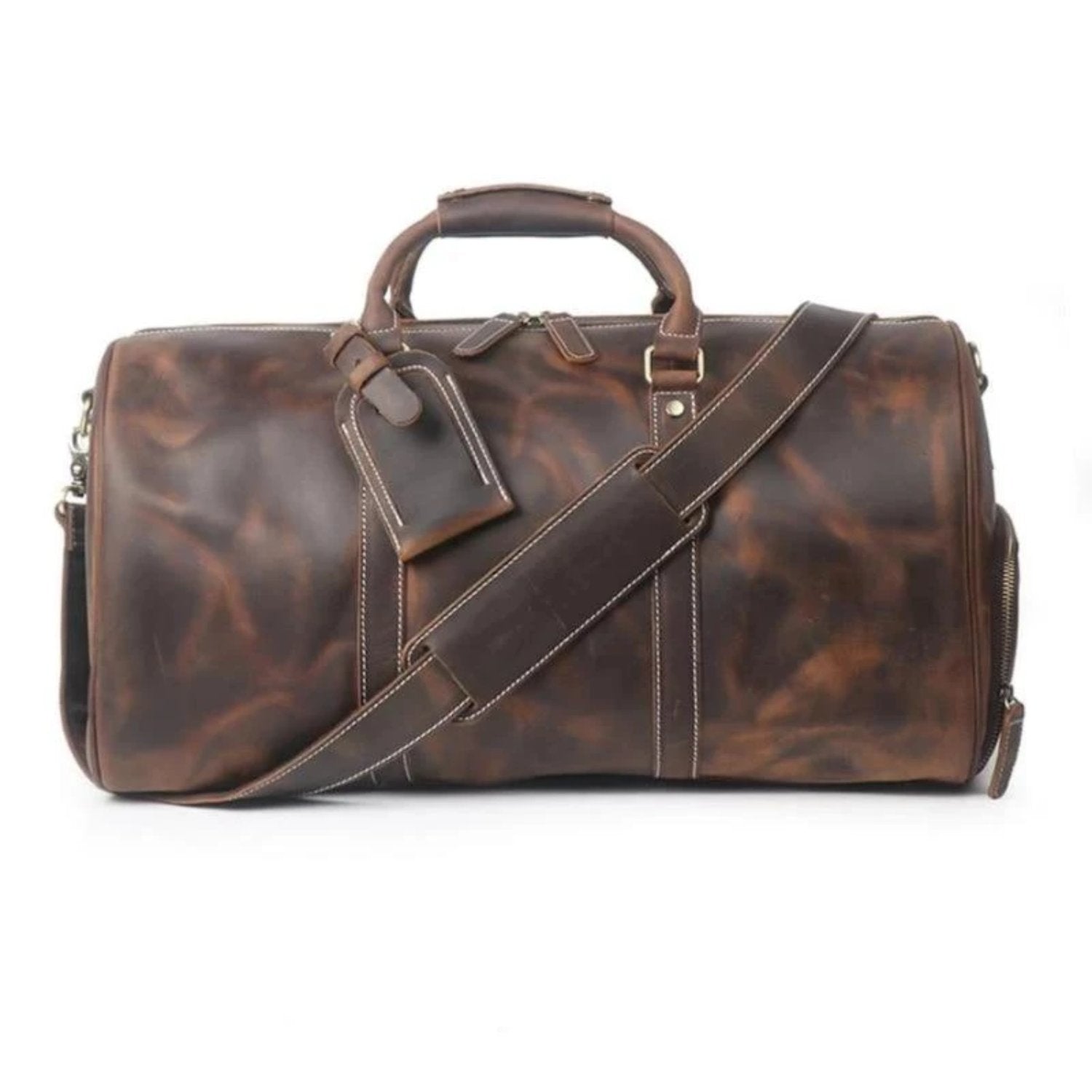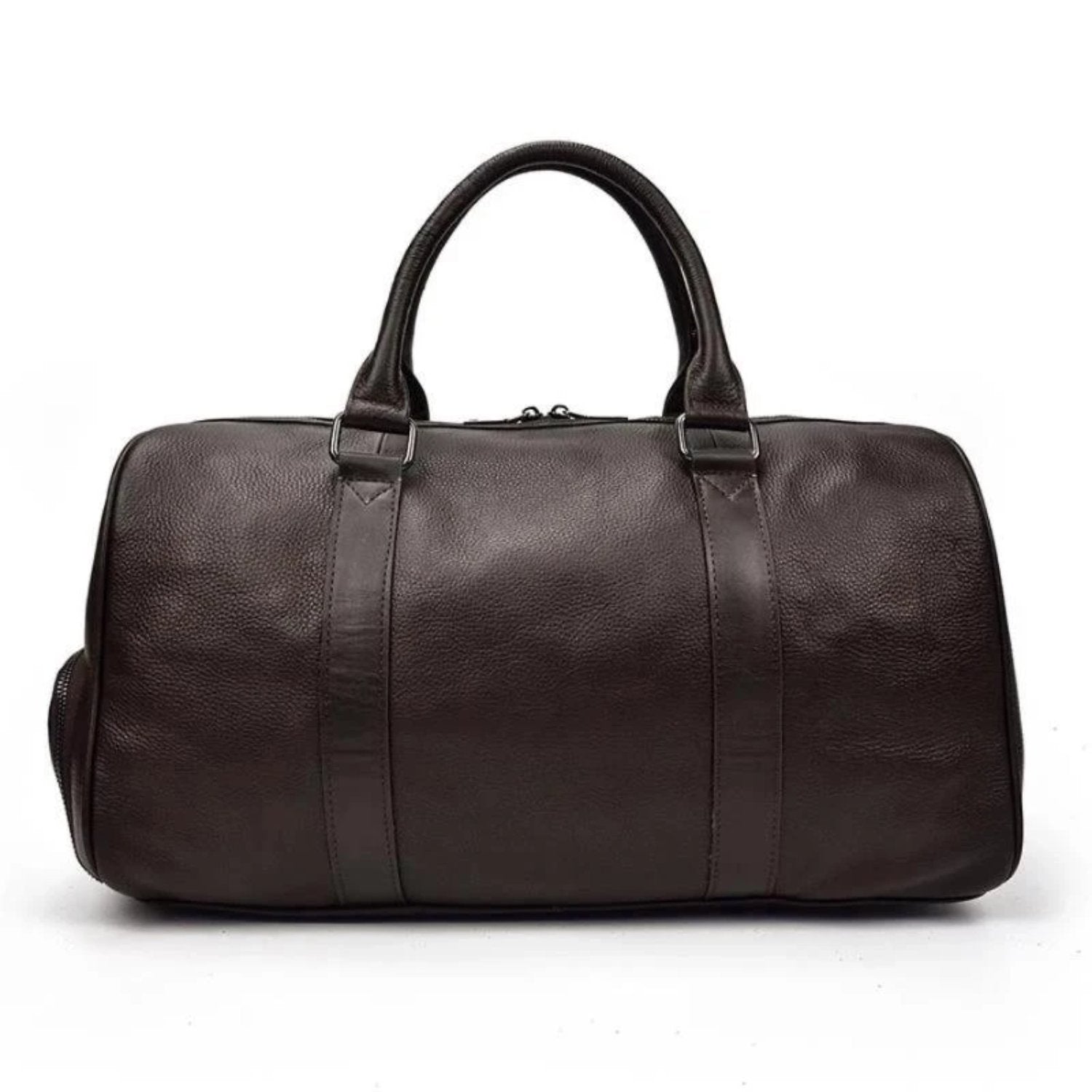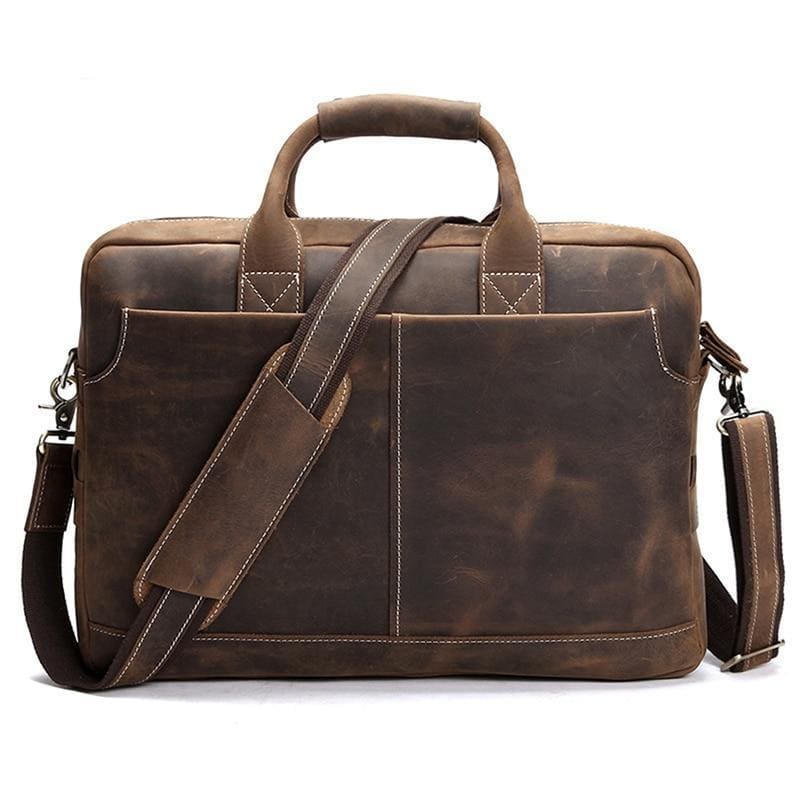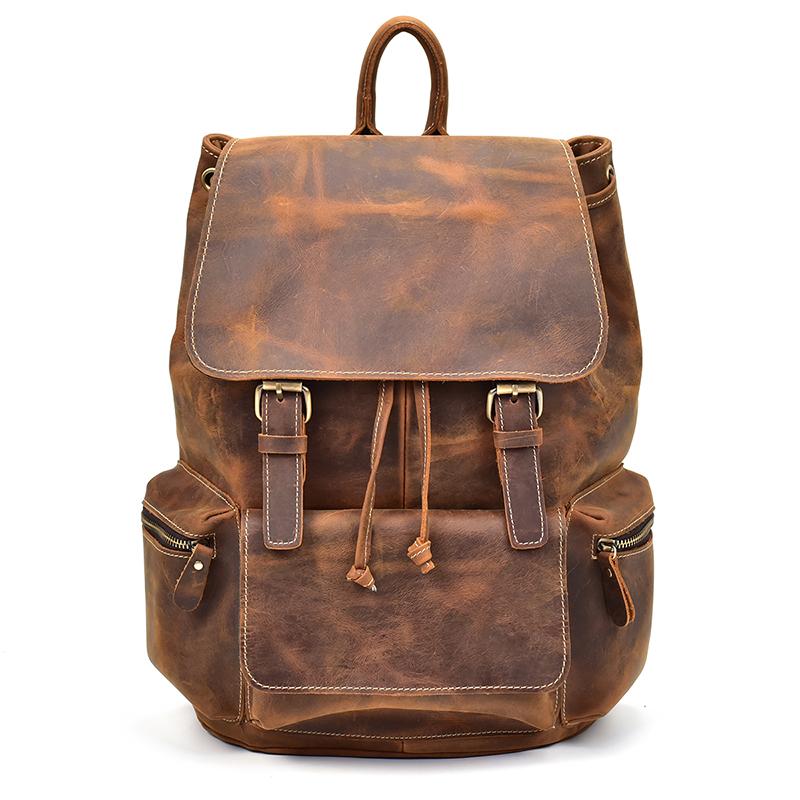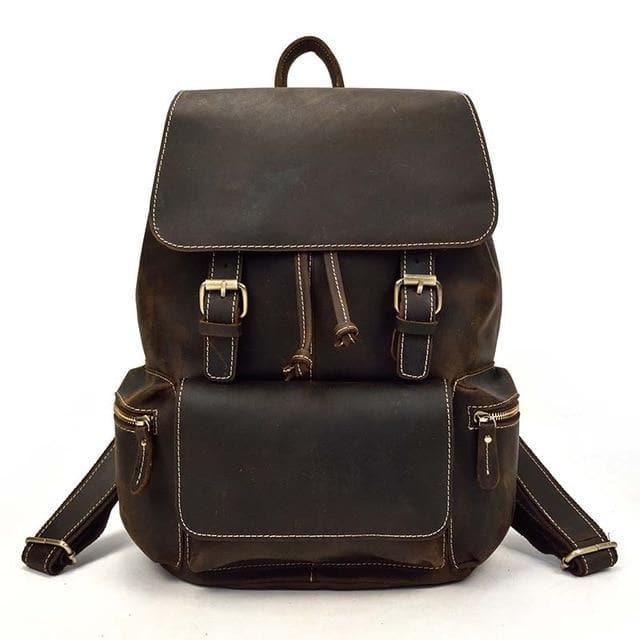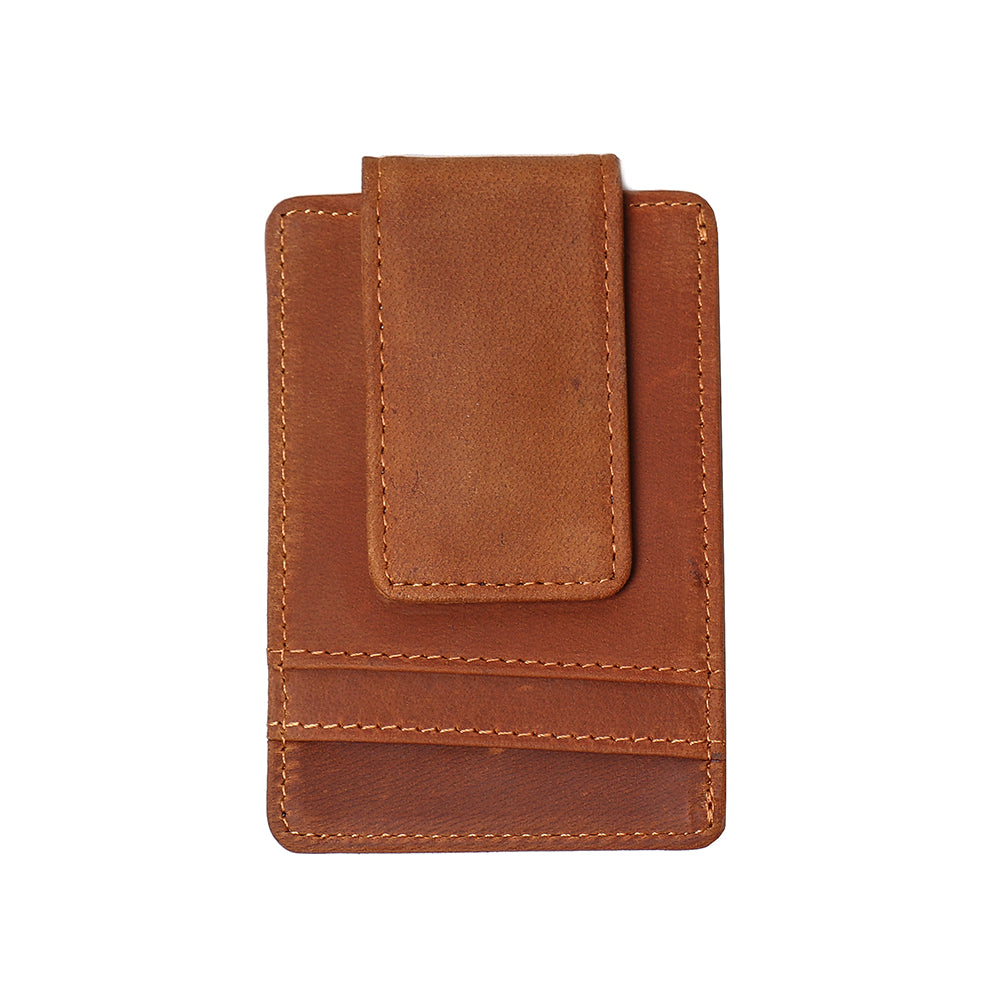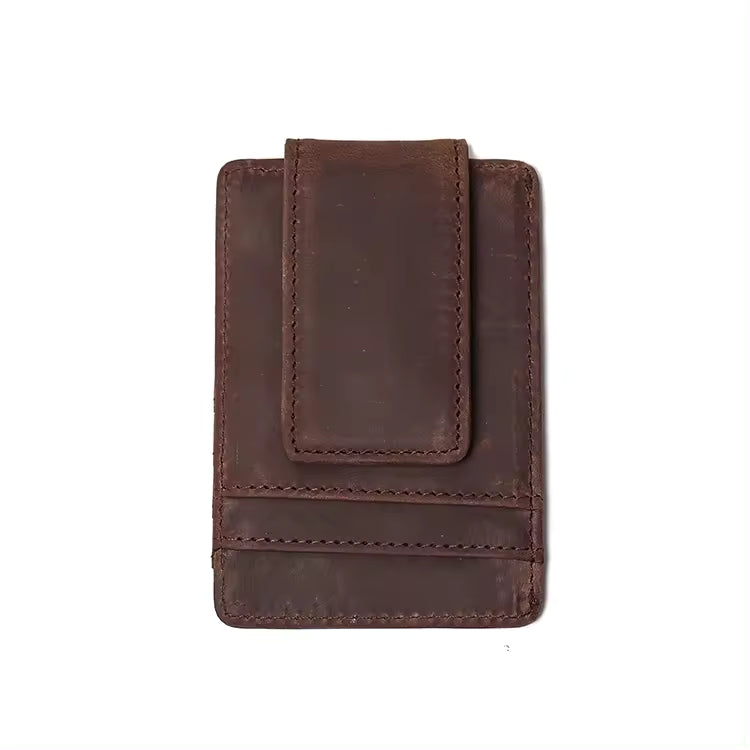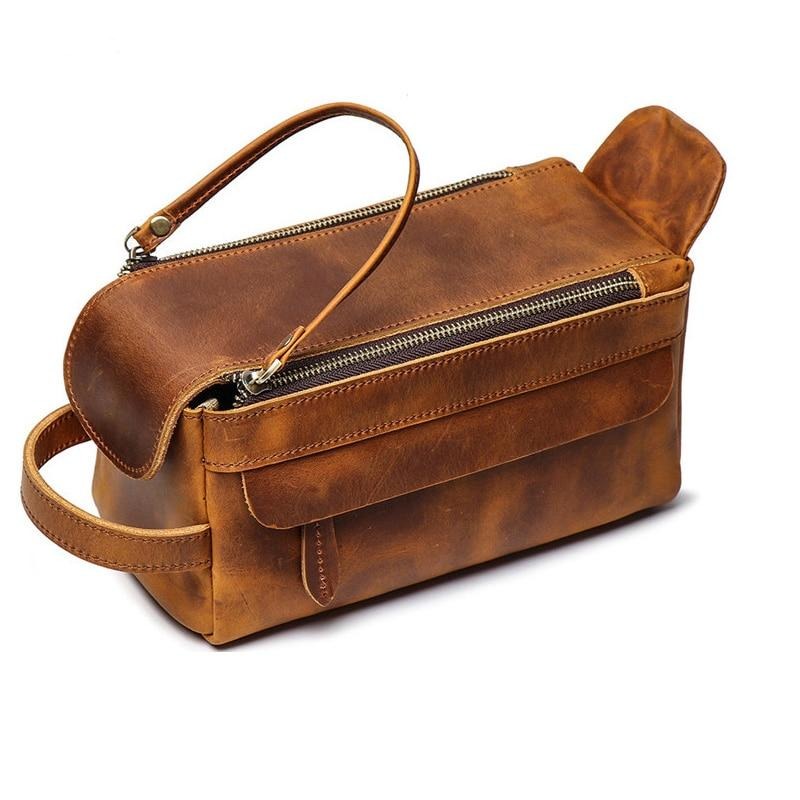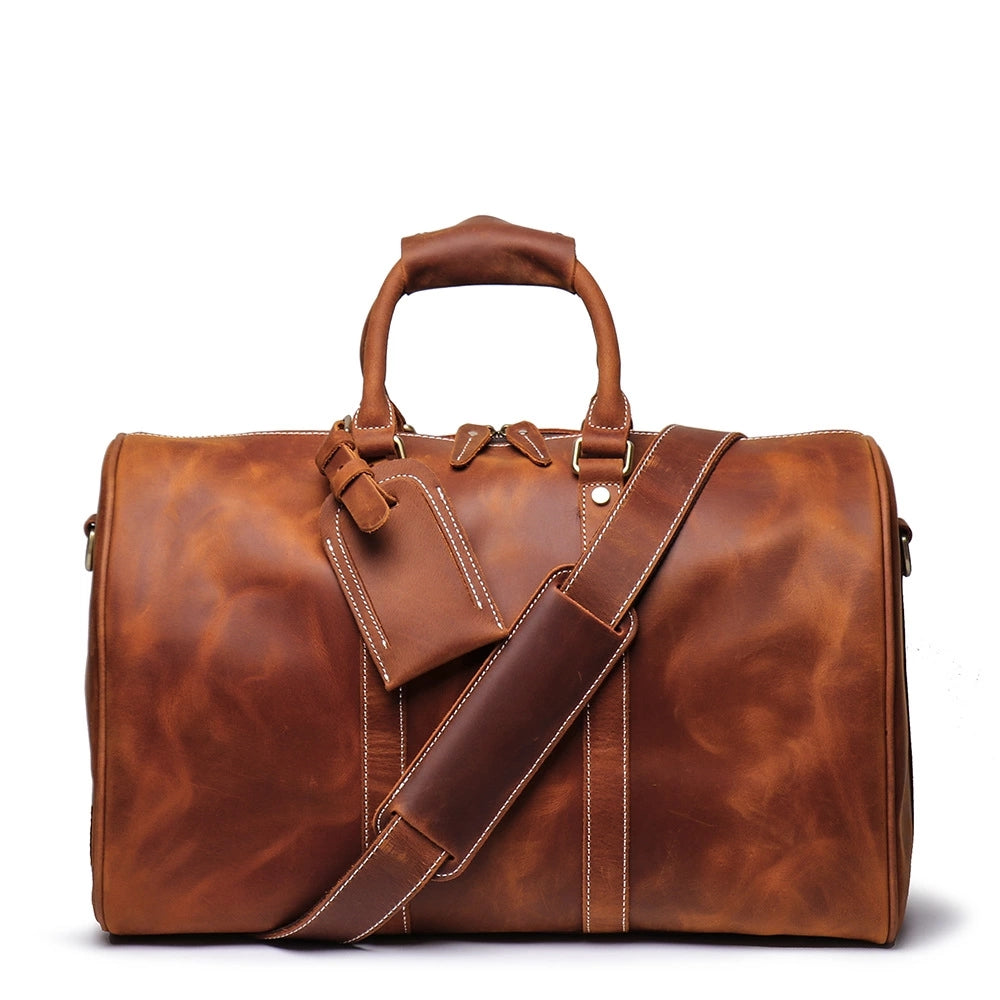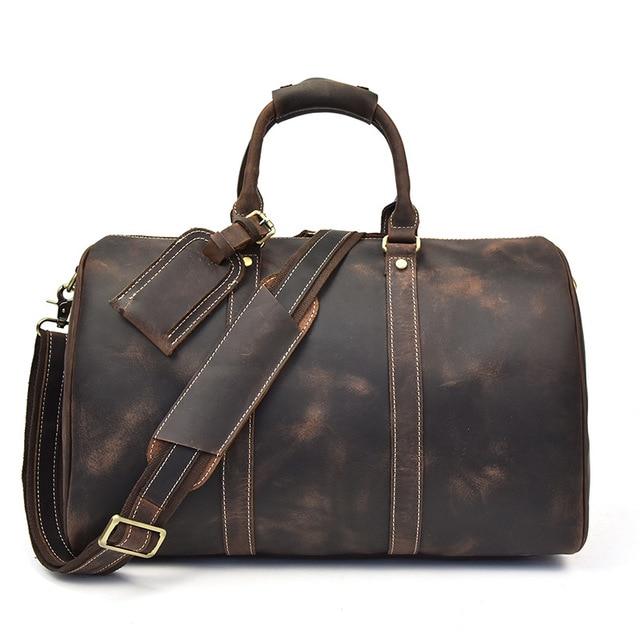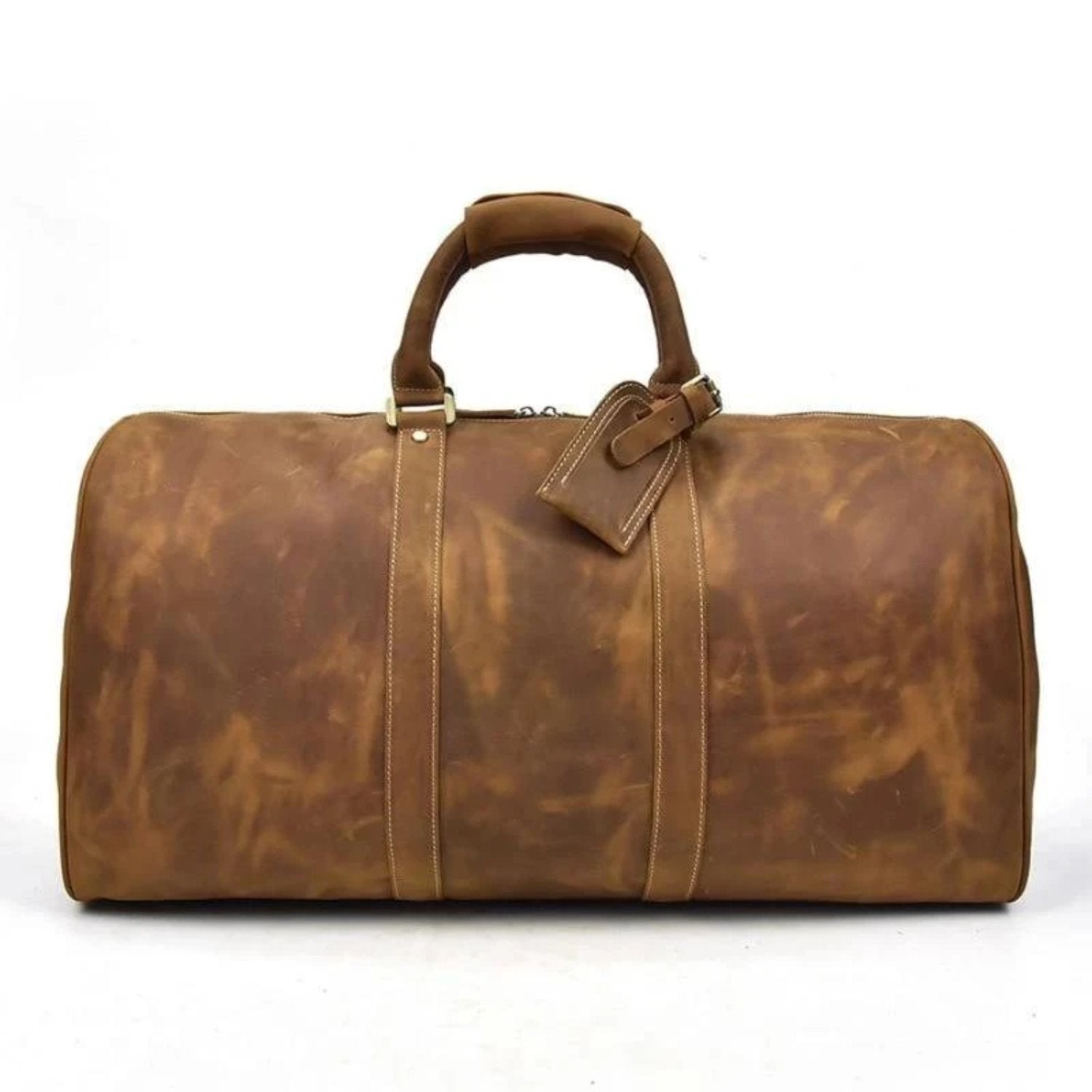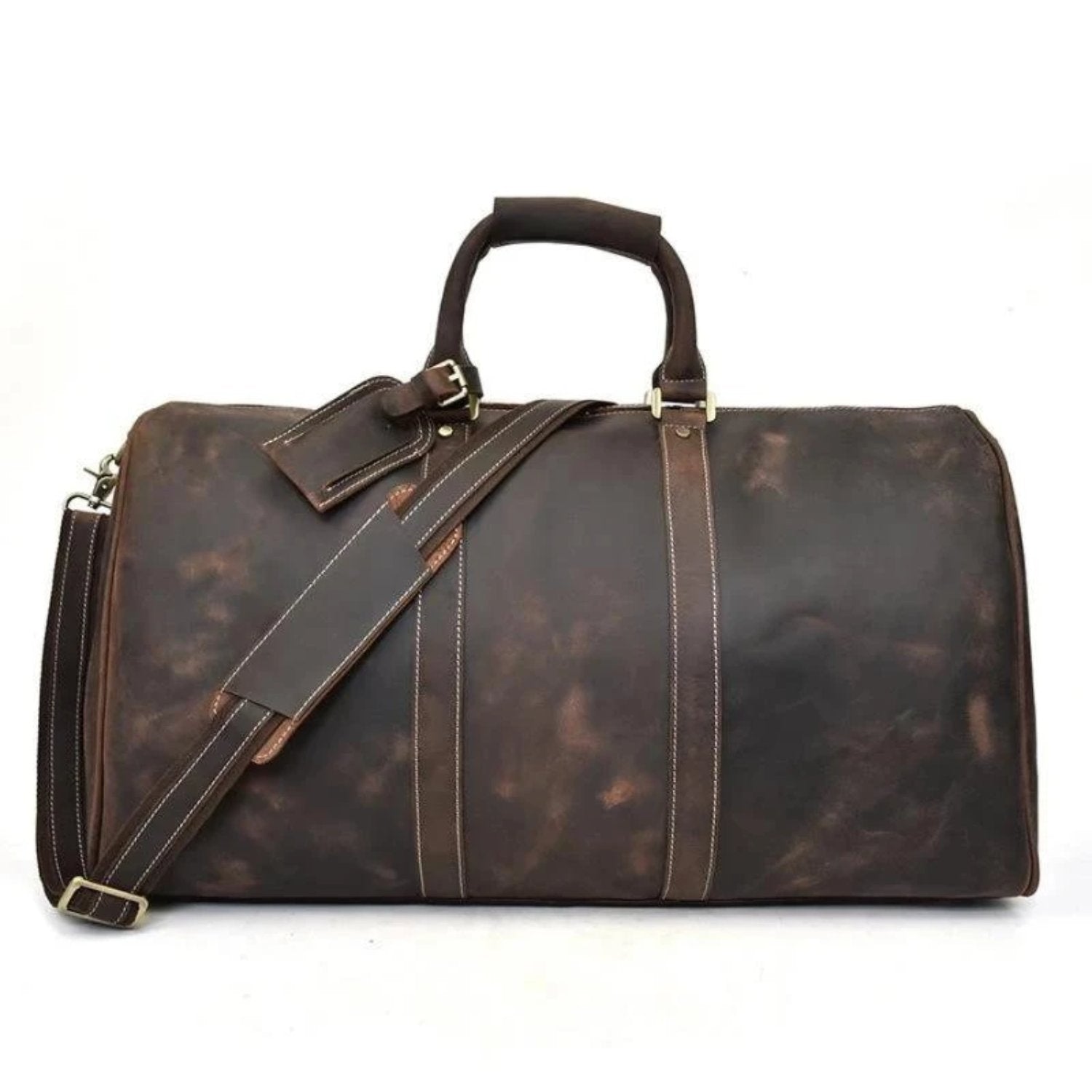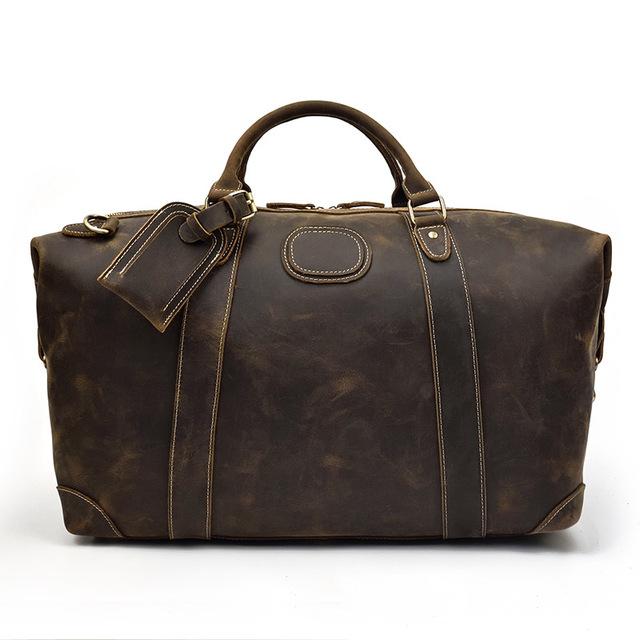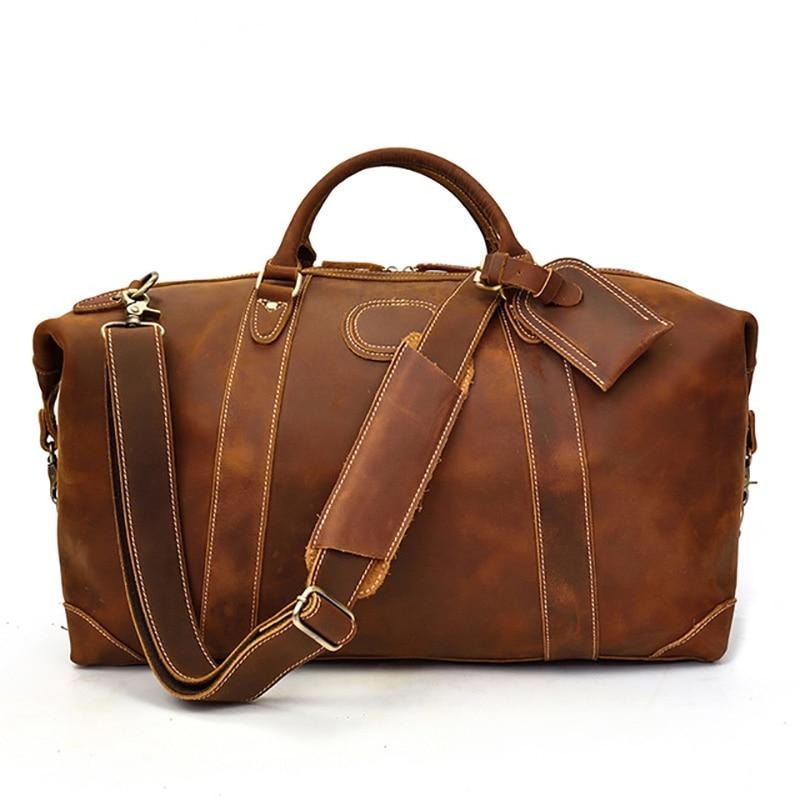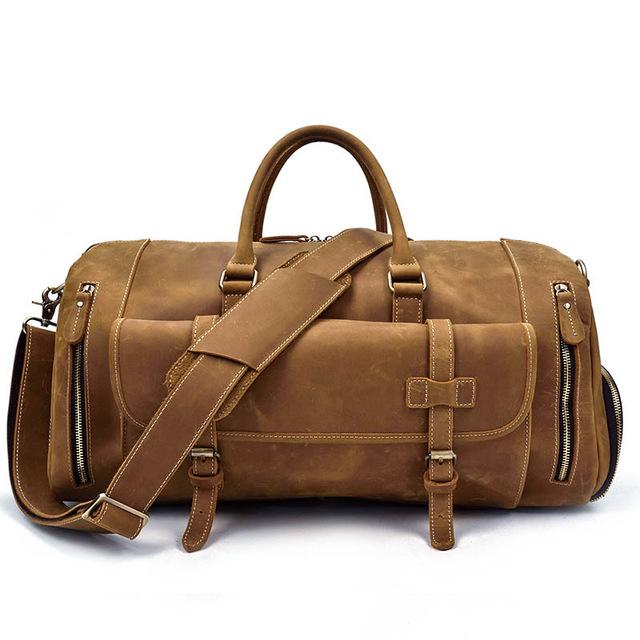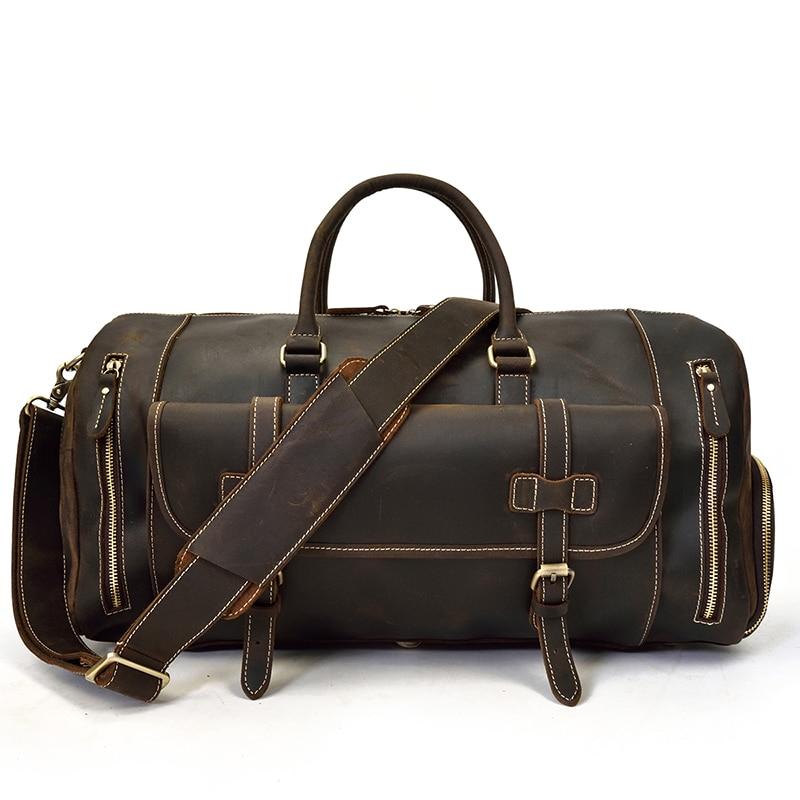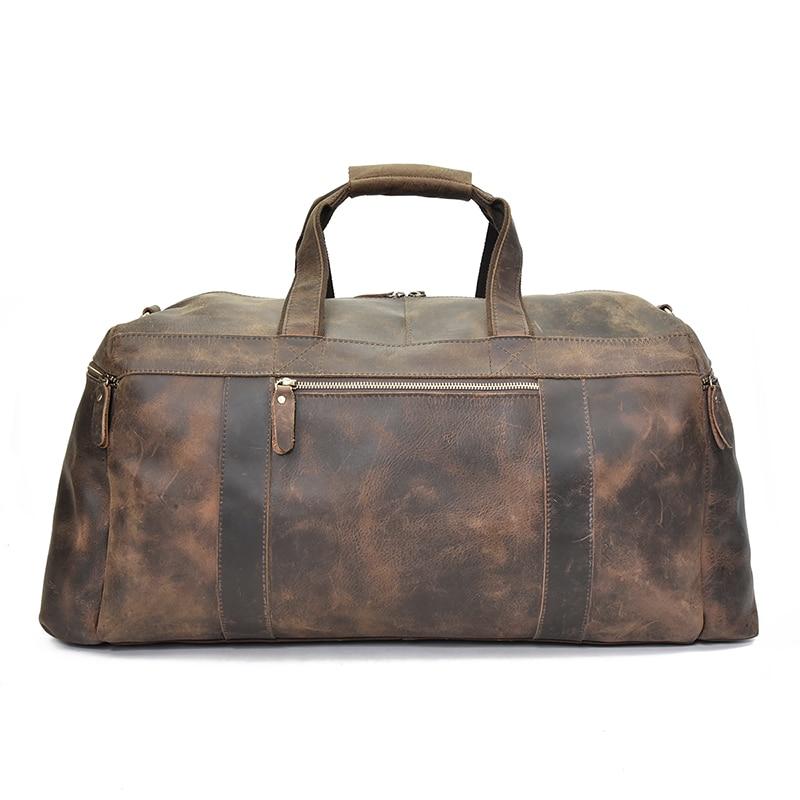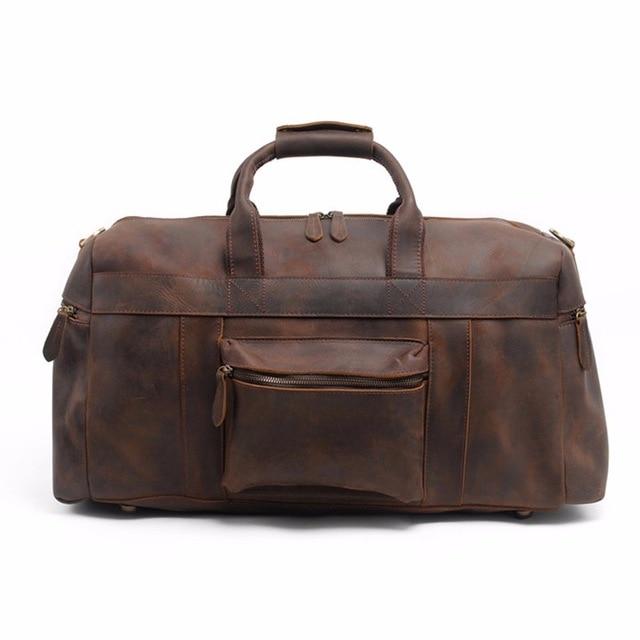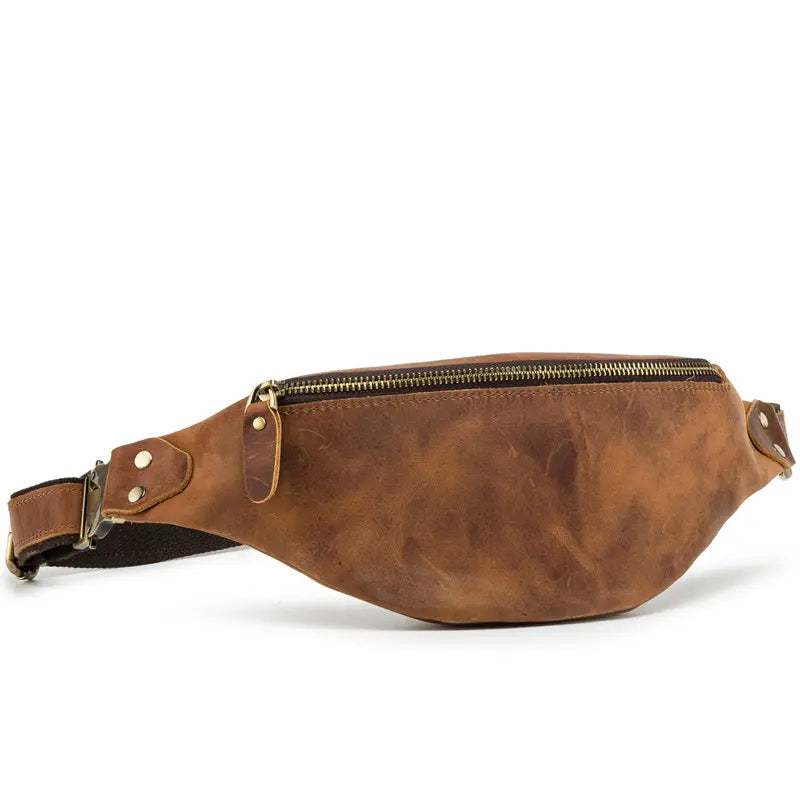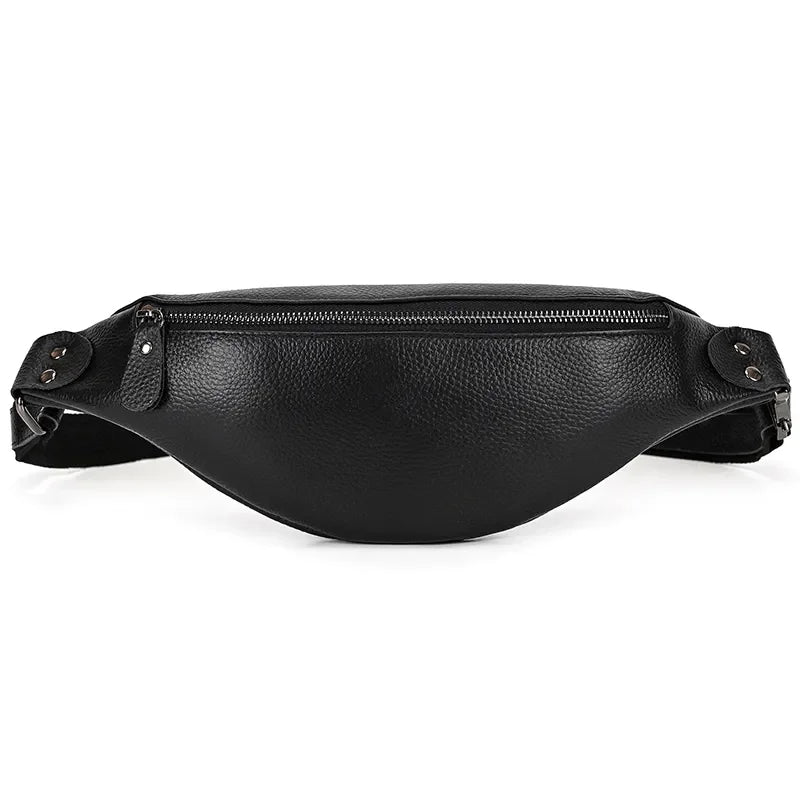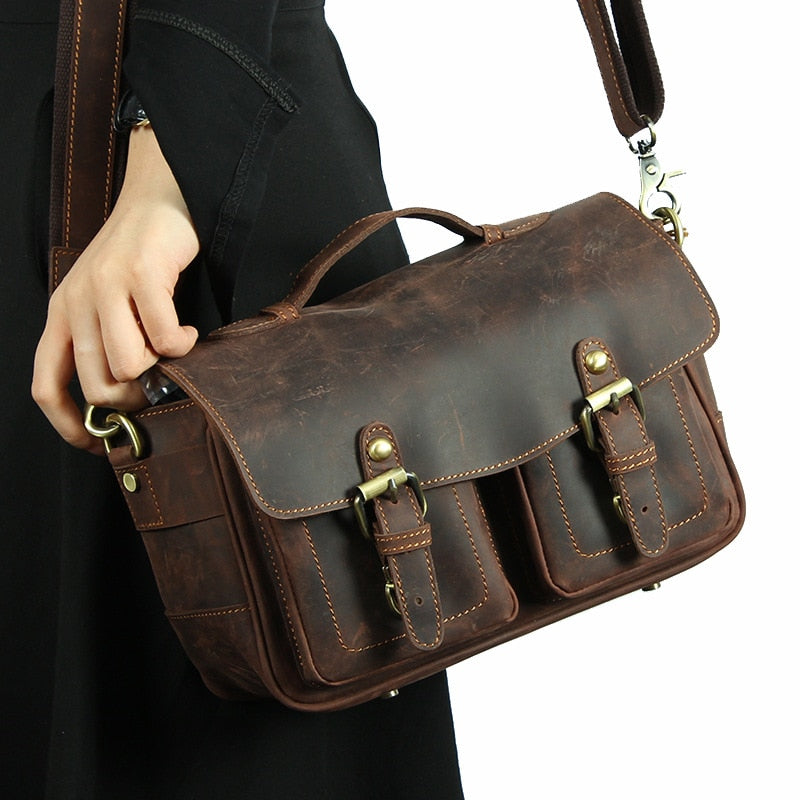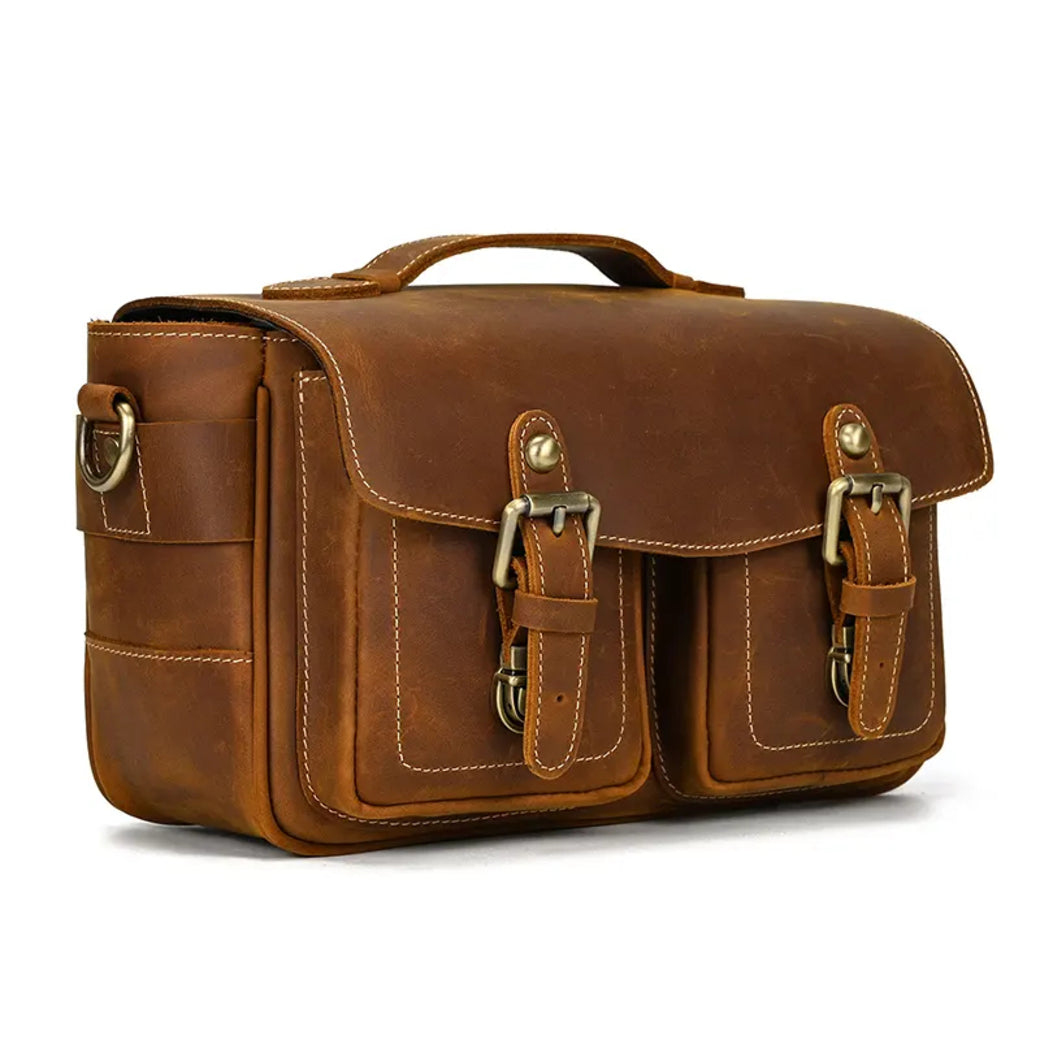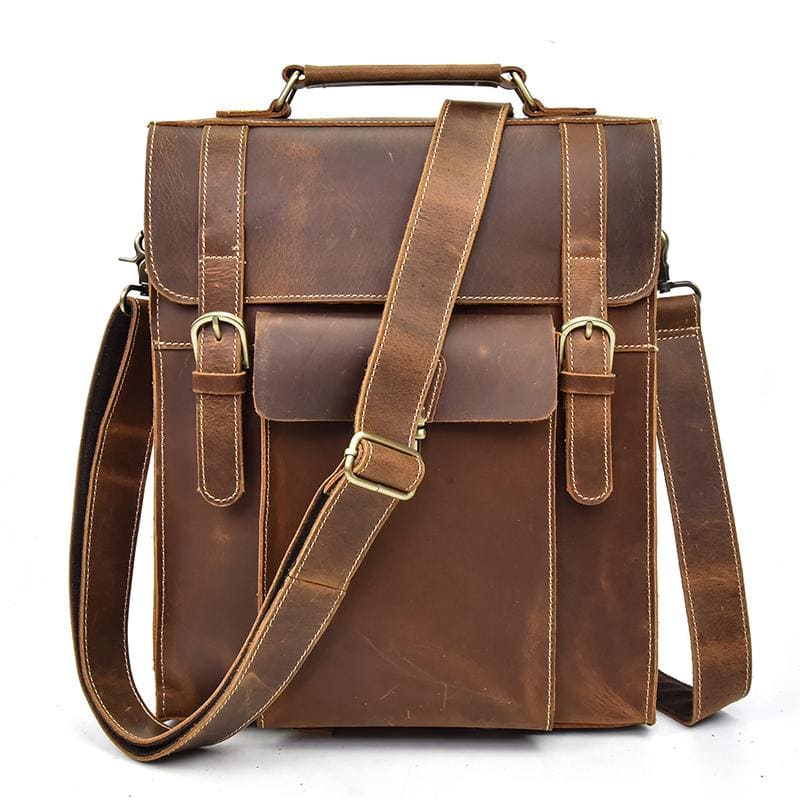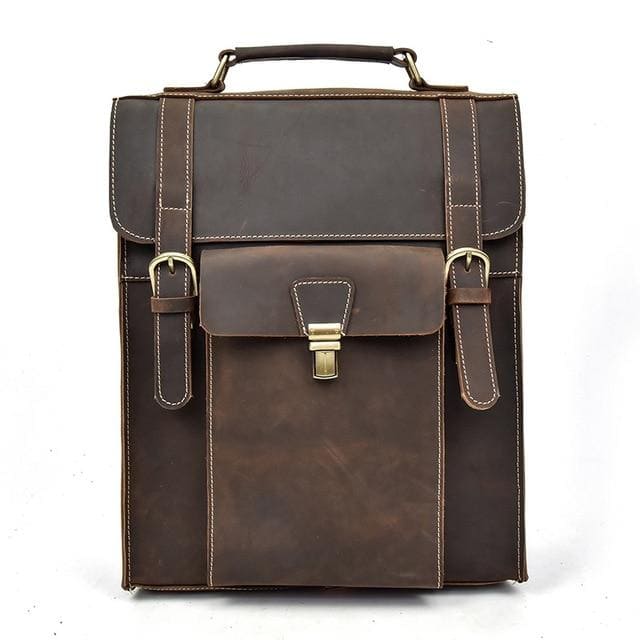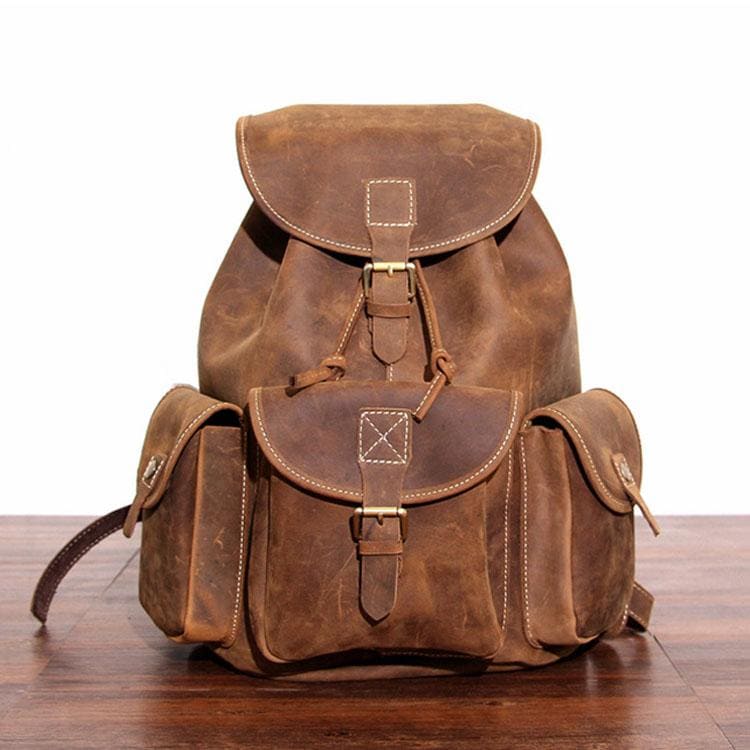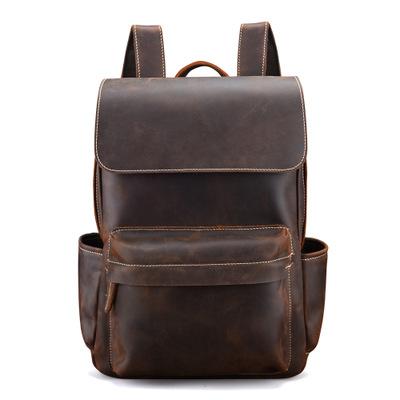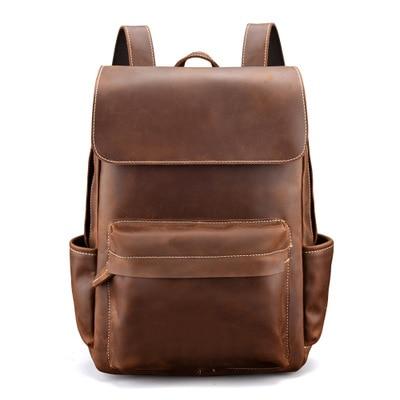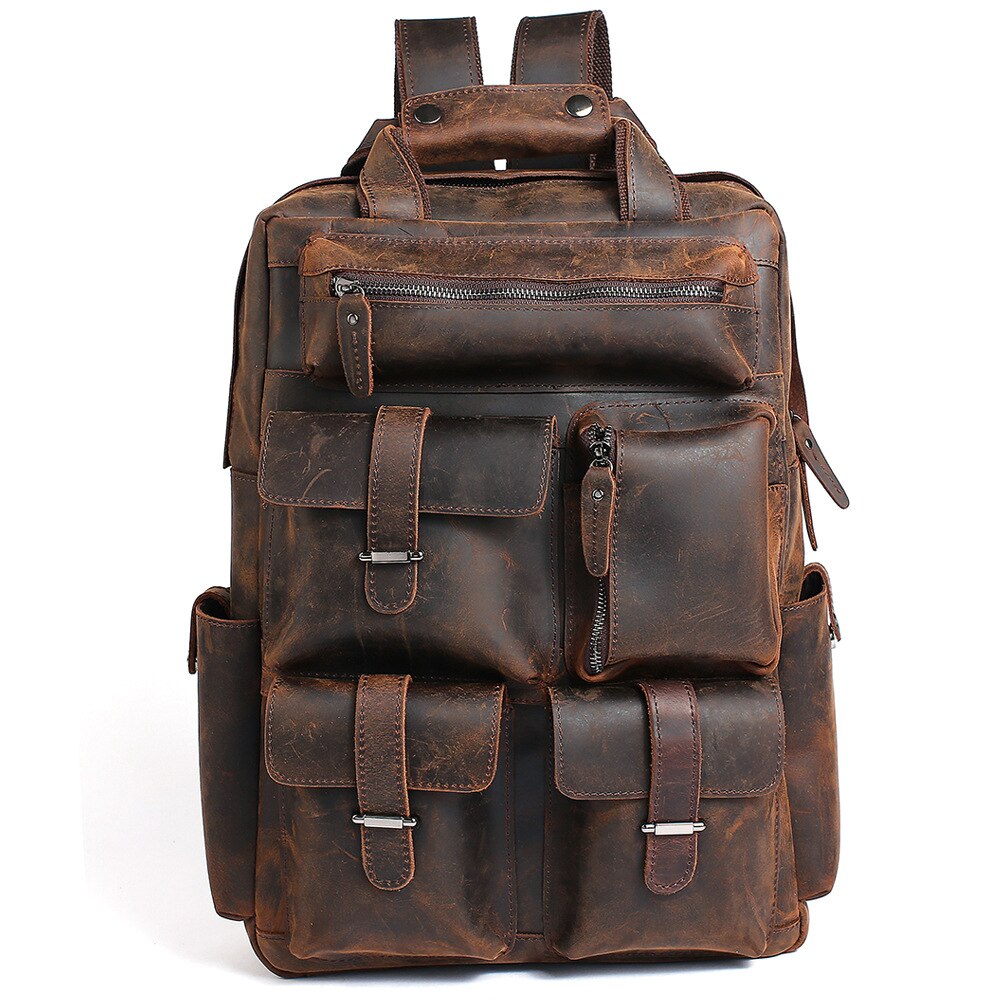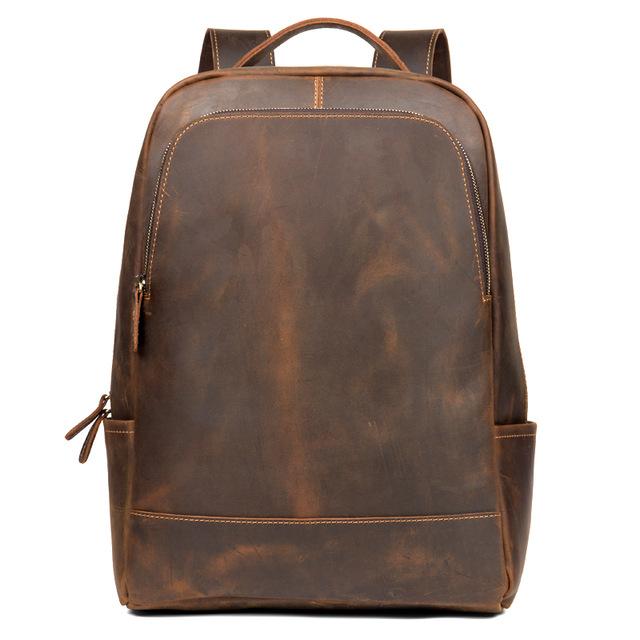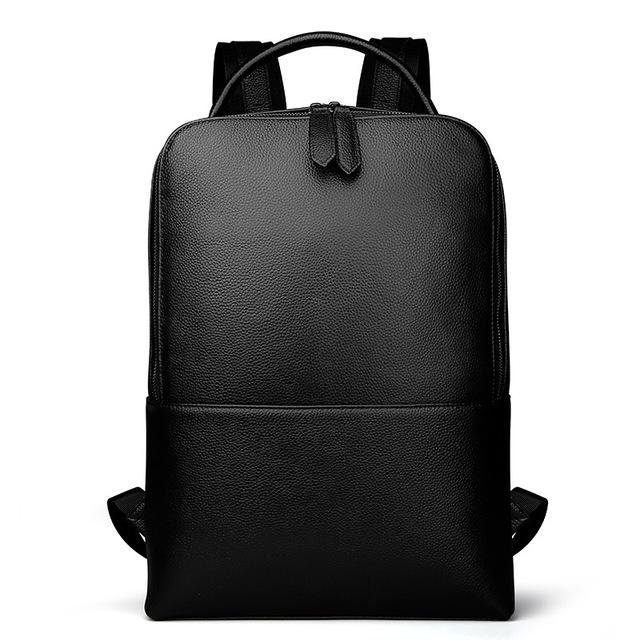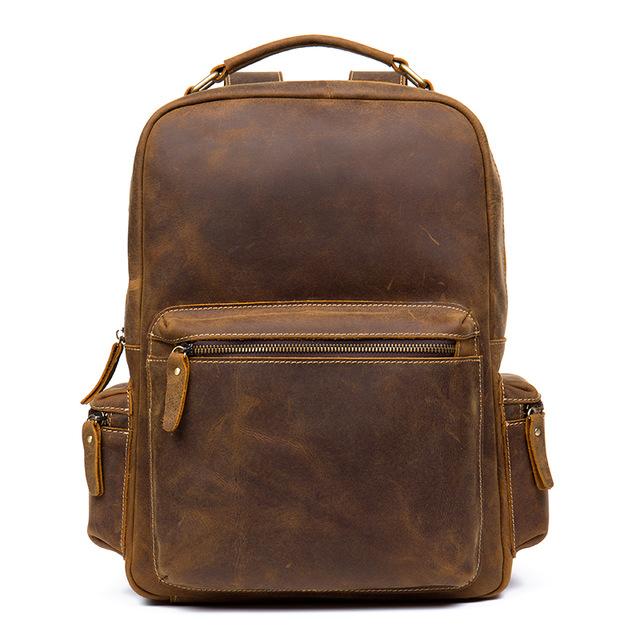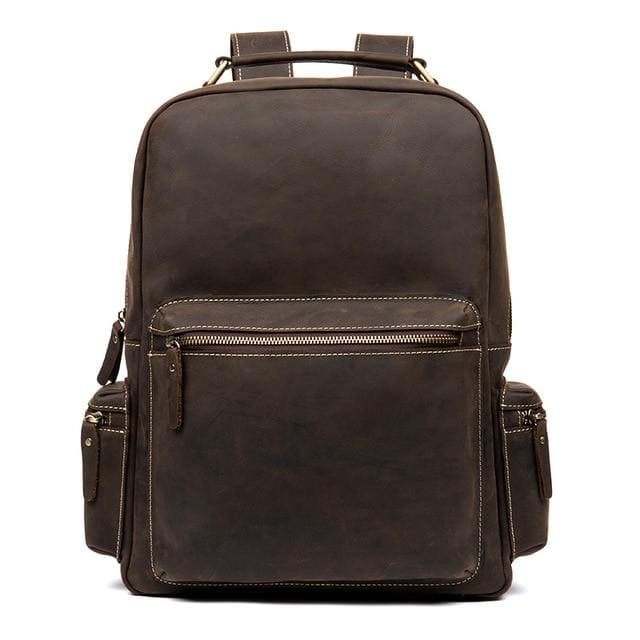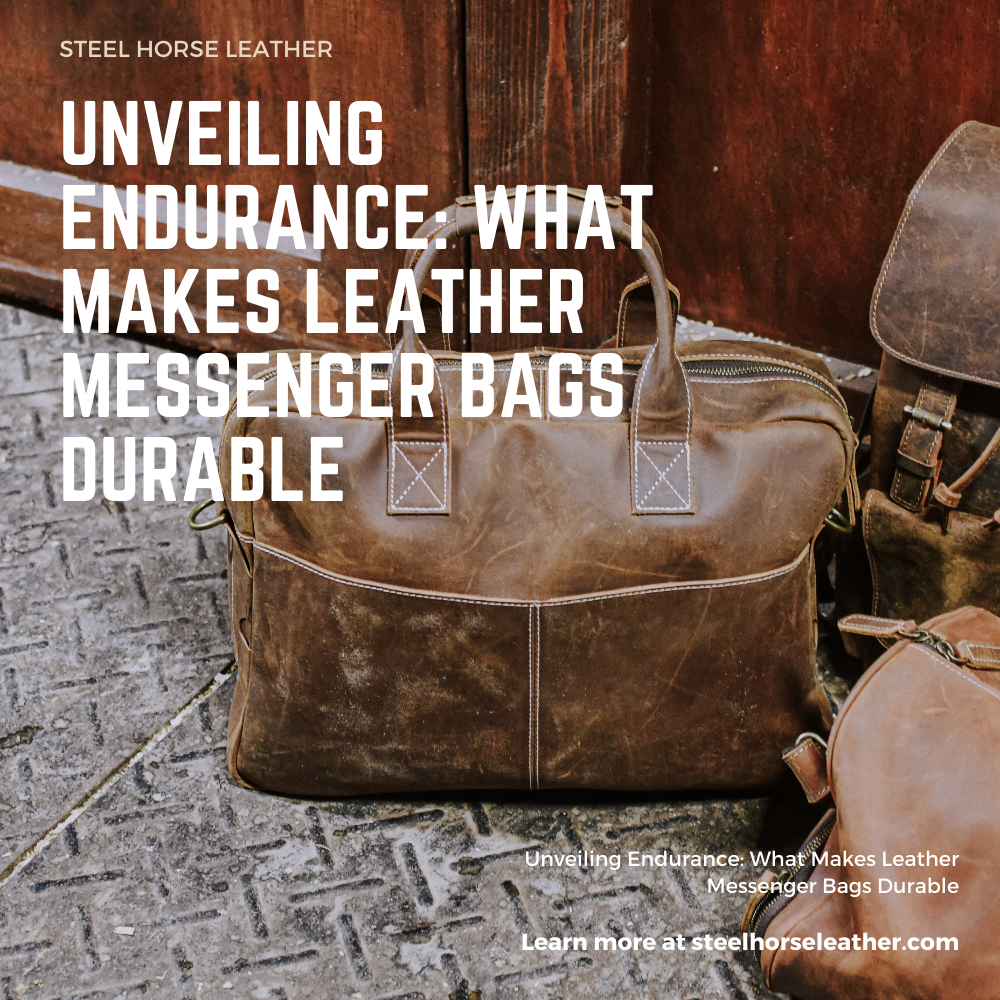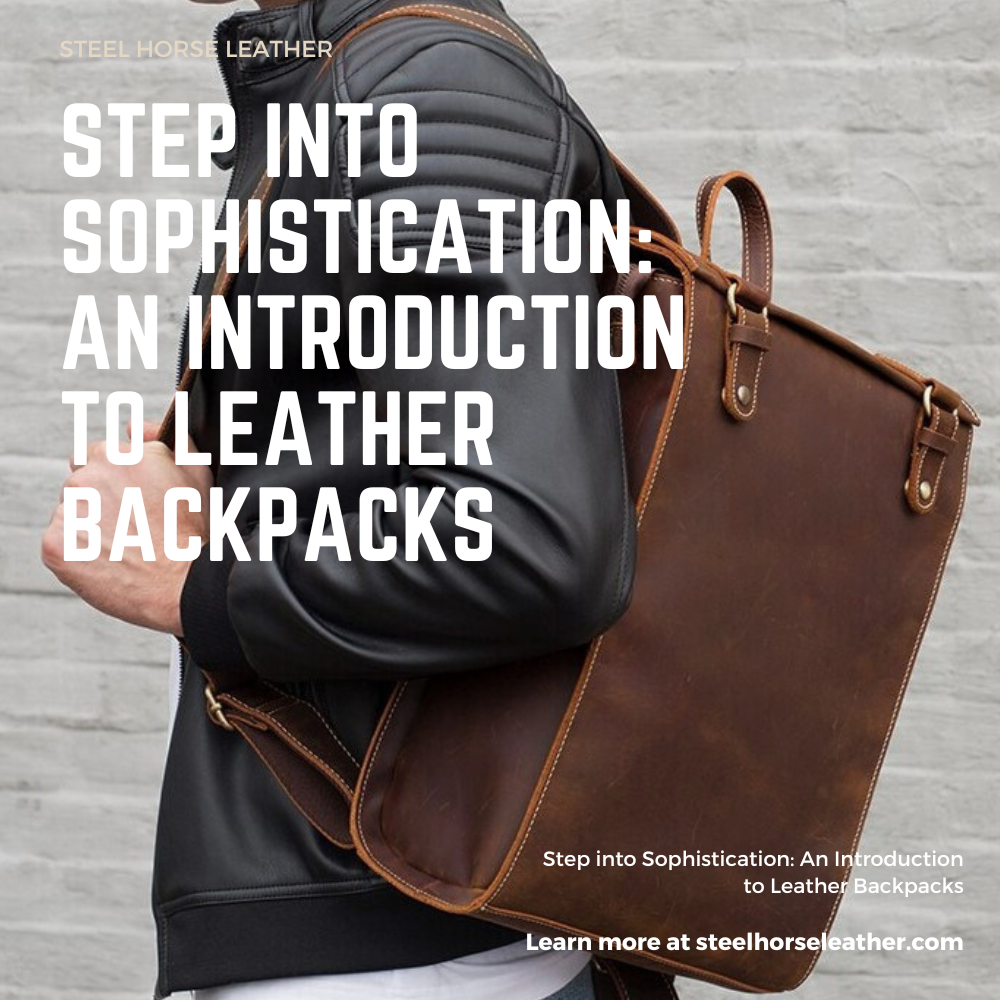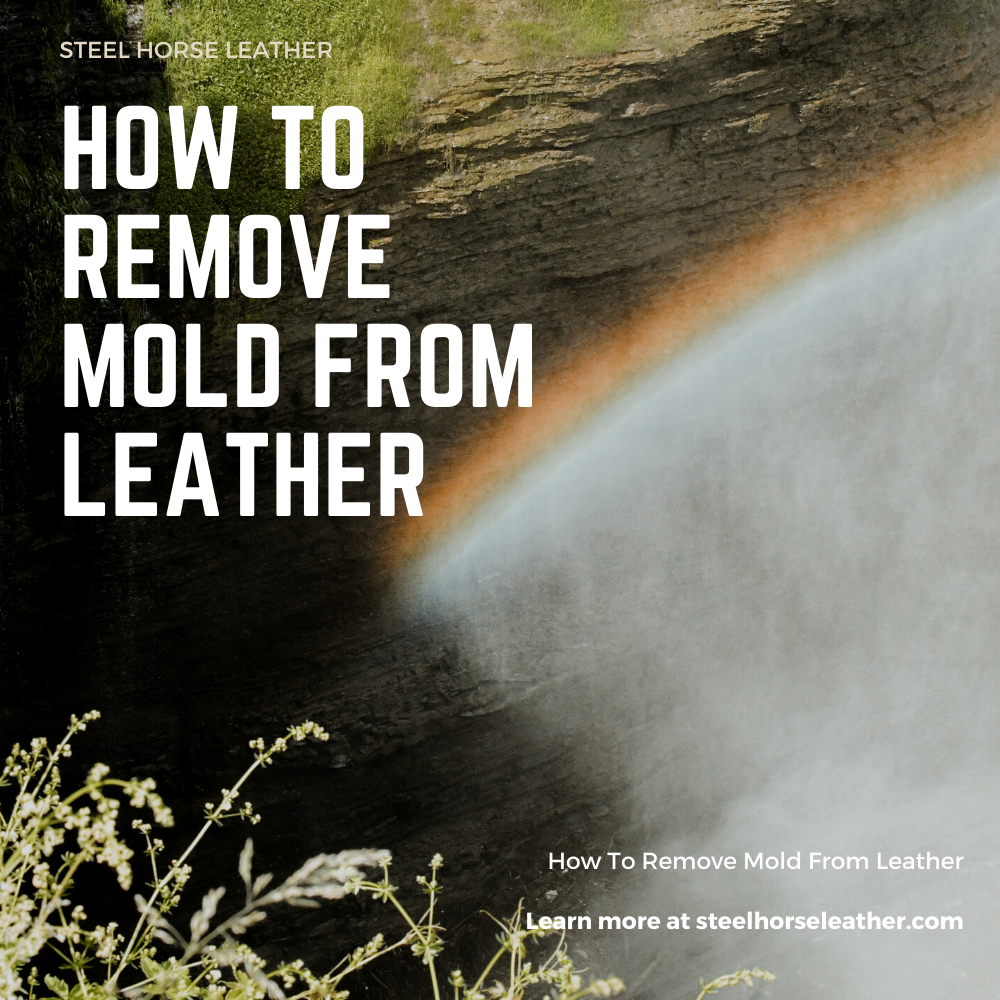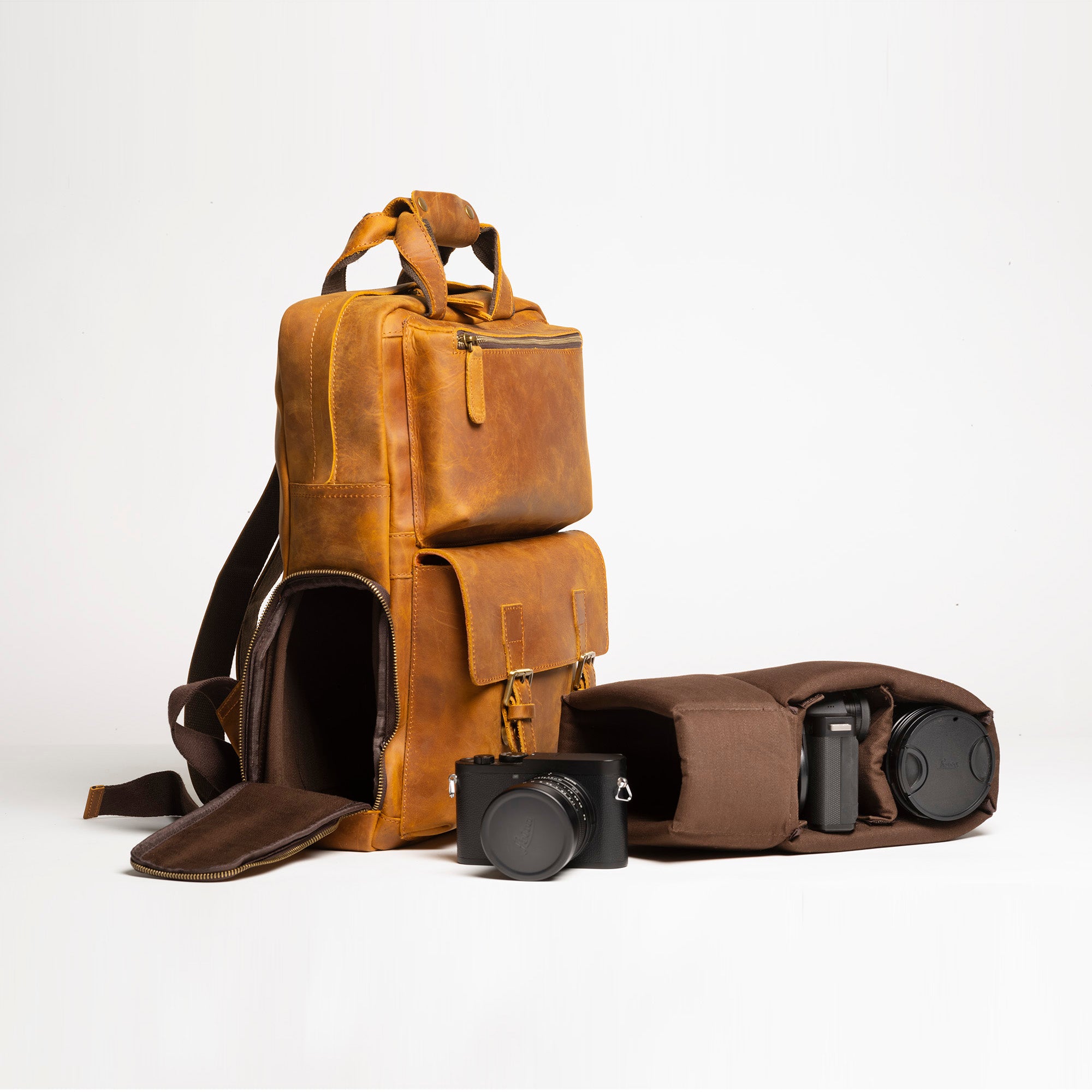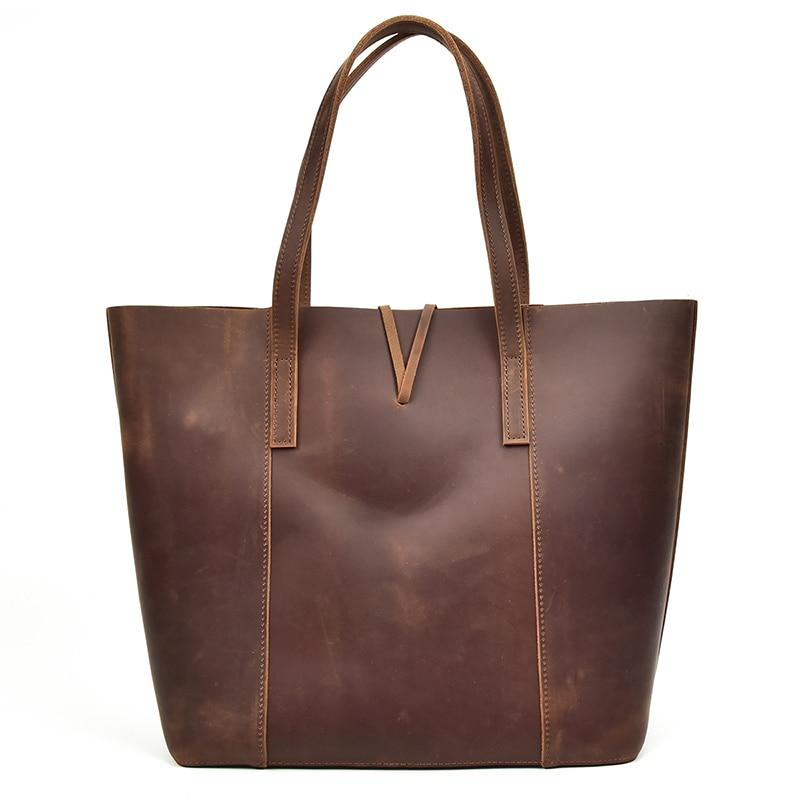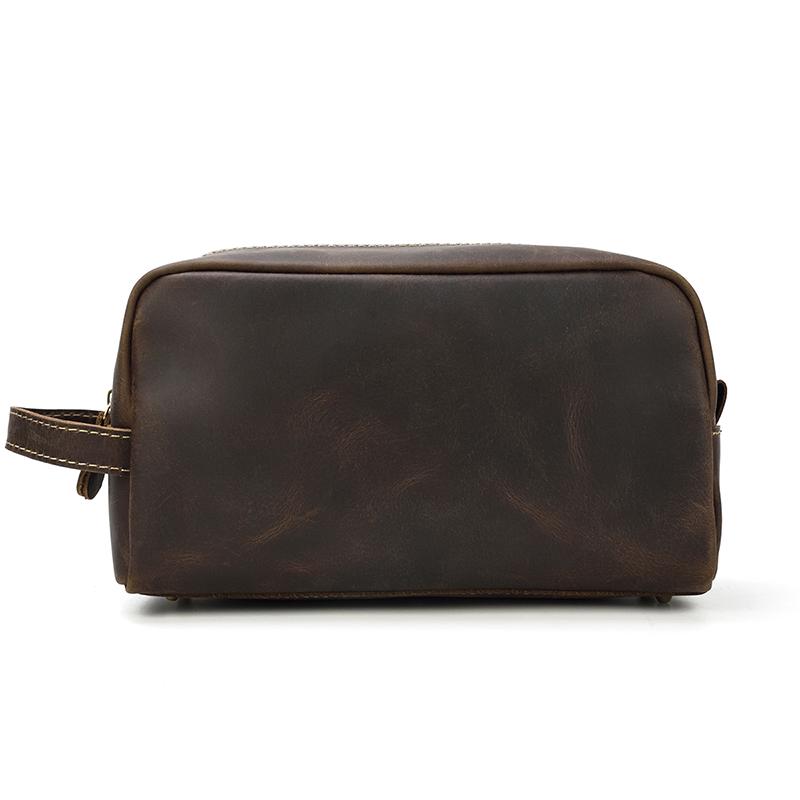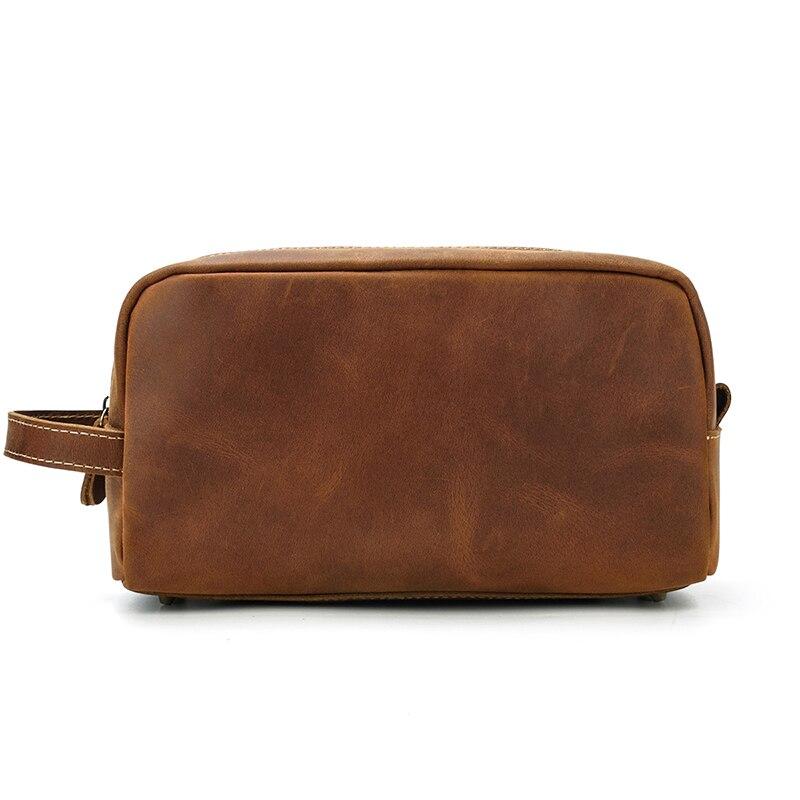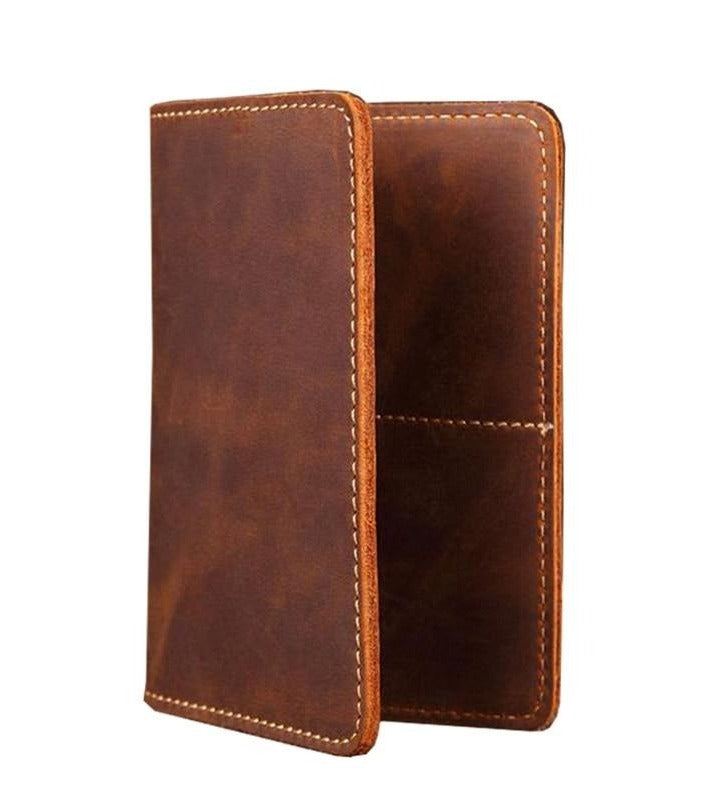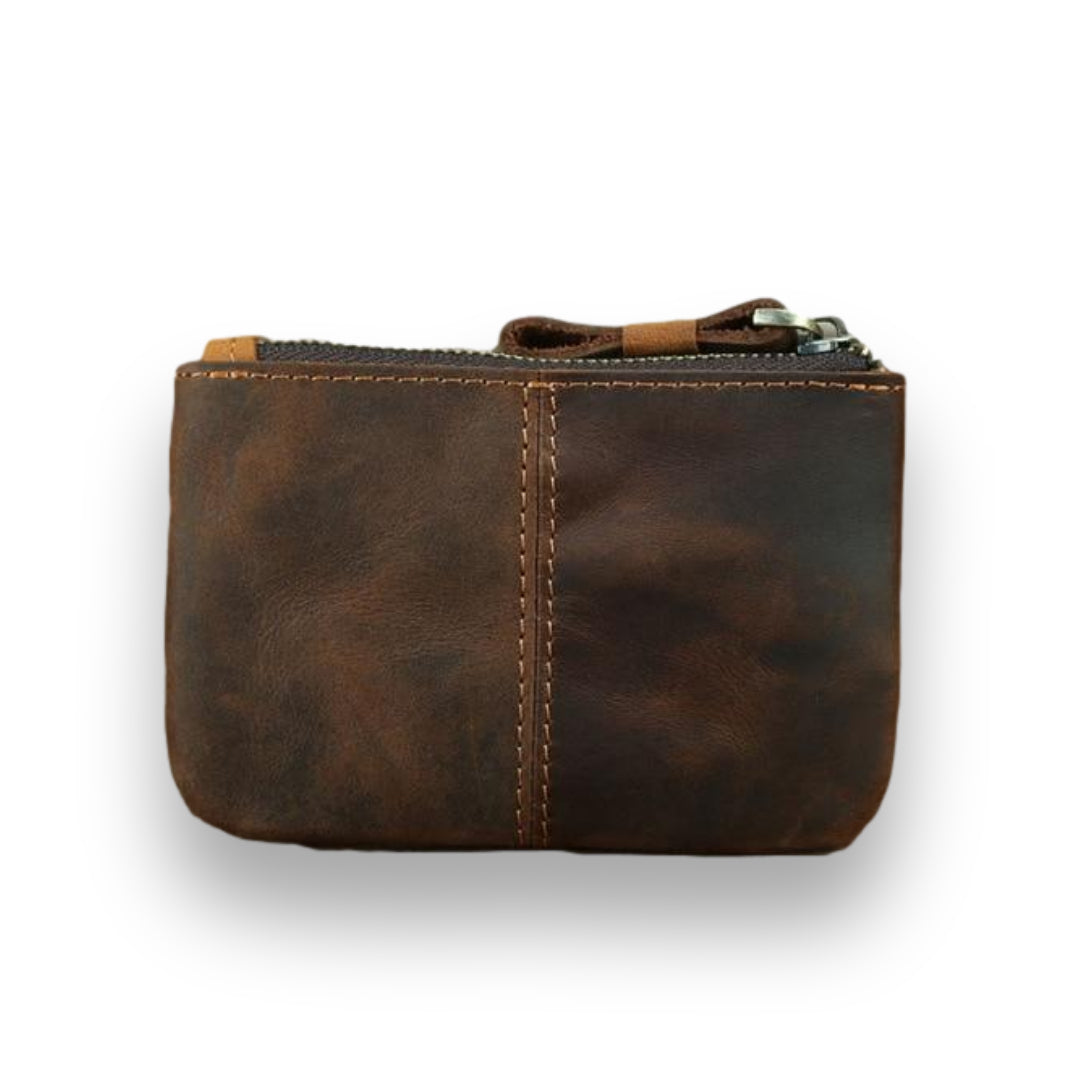Genuine Leather is completely natural, since it comes from the skin of animals mainly from cattle. It is comfortable, durable, resistant and never goes out of style. It also has an elegant and attractive appearance that is accentuated over time. Each Genuine Leather product is unique due to its manufacturing process and the fact that they are made entirely of natural material, therefore, each product tends to take a slightly different color. If you do regular maintenance, an Genuine Leather item can last for many years, so you can enjoy it and use it for much longer.
On the other hand, Pu Leather is made of a synthetic or artificial material called polyurethane, it is not as durable and resistant as Genuine Leather and tends to tear more easily. Unlike Genuine Leather, PU Leather is not so breathable. While Genuine Leather tends to be more attractive and softer over time, this does not happen with PU Leather, which will maintain a uniform appearance and feel throughout its life. In general, the shelf life of the synthetic leather product is one third of the real leather product.
However, there will always be a great difference in quality between genuine or real leather and synthetic or artificial leather.
Key Takeaways
-
Genuine leather is 100% natural and biodegradable, sourced primarily from cattle hides and processed through tanning methods, while PU leather is a synthetic, non-biodegradable material made with polyurethane applied to base fabrics like cotton or polyester.
-
The lifespan of genuine leather products is approximately three times longer than that of PU leather alternatives, making genuine leather the more cost-effective choice in the long run despite higher initial investment.
-
Genuine leather develops character over time, becoming softer and more attractive with age, whereas PU leather maintains a uniform appearance throughout its shorter lifespan.
-
Breathability is a significant advantage of genuine leather due to its natural pores, making it more comfortable for items that maintain prolonged contact with skin, while PU leather lacks this quality.
-
Each genuine leather product is unique due to natural variations in the material and craftmanship, resulting in slight differences in color and texture that contribute to its distinctive appeal.
Our Leather Craftsmanship: A Tradition of Excellence
At Steel Horse Leather, our expertise in leather craftsmanship isn't just about producing products—it's about preserving an ancient art form. Our master artisans have dedicated their lives to perfecting their craft, bringing decades of combined experience to every genuine leather item we create. We understand leather at its most fundamental level—how it breathes, ages, and develops character over time—because we've spent years working with this remarkable natural material.
We take immense pride in our sourcing and quality control processes. Our team has meticulously vetted numerous leather suppliers, examining their backgrounds, ethical practices, and tanning methods to ensure we work only with the finest genuine leather available. This hands-on approach gives us unparalleled knowledge of leather characteristics and quality markers that we've shared throughout this guide. When we discuss the differences between genuine leather and PU alternatives, we do so from a position of practical expertise gained through years of material selection and product development.
Understanding Leather Types
There are different types of leather, primarily genuine or natural leather and synthetic or artificial PU leather. Knowing the differences between these types is essential when considering leather products.
What is Genuine Leather?
Genuine leather is a 100% natural material, it is made from the skin of animals, usually from cows (cowhide), which must be tanned to prevent its decomposition and turn it into usable leather. This process is done in a tannery. There are several types of tanning techniques, chrome tanning and vegetable tanning are the most popular.
Chrome tanning is generally considered the most efficient method and uses chromium sulfate, a chemical material to make leather more durable and resistant.
The final product obtained can be a soft, hard or suede leather, depending on the use to which it will be destined.
What Is PU Leather?
PU leather is a type of man-made synthetic or artificial leather, made with a polymer substance similar to leather made of polyurethane, a type of plastic created to have the same appearance and texture as leather.
These types of synthetic leathers imitate the texture, color and shine of natural leather, and may have different finishes. In appearance, it may seem very similar to real leather. But in most cases it is a bit thinner than this one.
PU leather is manufactured by applying a 100% polyurethane surface to a base material. The most common base materials used in the manufacture of this type of leather include nylon, cotton, polyester or rayon. PU leather can never exceed the quality of Genuine Leather.
What Makes Genuine Leather The Best Choice?
The main quality of genuine leather is its unsurpassed quality. Genuine leather is a natural material, so products made with this type of leather are of excellent quality. Due to their manufacturing process they are unique items, since they are made entirely of natural material and each product ends up made with a slightly different color. Genuine leather is ideal for any occasion as it adapts and looks good in any environment. Genuine leather is comfortable and secure, strong and durable, elegant and sophisticated. Genuine leather never goes out of style and acquires an attractive appearance over time.
These aspects among others make genuine leather the best option when choosing a product made of leather.
Pros & Cons: Genuine Leather vs. PU Leather
| Feature | Genuine Leather | PU Leather |
|---|---|---|
| Material | 100% natural, biodegradable, ecological. | Synthetic, non-biodegradable, contributes to environmental pollution. |
| Durability | Long-lasting with proper care, can outlive original owner. | Less durable, shorter lifespan (about one-third of genuine leather). |
| Attractiveness | Becomes more attractive and softer over time, develops unique beauty. | Maintains a uniform appearance and feel throughout its lifespan. |
| Resistance | Strong and resistant, difficult to tear or pierce. | Thinner, more prone to tearing and breaking. |
| Comfort | Breathable due to natural pores, softens and becomes malleable over time. | Stiff, does not soften, not breathable. |
What to Know When Considering Leather Products:
- There are two main types: Genuine (natural) leather and PU (synthetic) leather.
- Research and understand the characteristics and properties of each type before deciding.
- Consider the desired longevity of the product: Genuine leather is a long-term investment, while PU leather is a short-term option.
- Genuine leather generally offers superior durability, comfort, and aesthetic appeal.
A direct comparison of genuine leather and PU leather across several key factors can help you understand their differences and make an informed choice.
Material
Handmade Genuine Leather Products: It is 100% natural therefore it is biodegradable and does not harm the environment. It is an ecological product.
PU Leather Products: It is synthetic and is not biodegradable, its decomposition can last hundreds of years, therefore it contributes to environmental pollution.
Durability
Handmade Genuine Leather Products: Genuine leather can last a long time if given proper care. You can easily survive its original owner.
PU Leather Products: Not as durable as genuine leather, the shelf life of the synthetic leather product is one-third of the real leather product.
Attractiveness
Handmade Genuine Leather Products: Genuine leather tends to be more attractive and softer over time, acquiring a unique beauty and elegance.
PU Leather Products: PU Leather will maintain a uniform appearance and feel throughout its life.
Resistance
Handmade Genuine Leather Products: Genuine Leather, being a natural material, is strong and resistant, difficult to tear or pierce.
PU Leather Products: PU leather is thinner than Genuine Leather, therefore, tends to tear and break more easily.
Comfort
Handmade Genuine Leather Products: Being a natural material, Genuine Leather has pores, therefore it is breathable. Real leather will soften over time becoming flexible and generally quite malleable.
PU Leather Products: The imitation leather, on the other hand, tends to be quite stiff and will not soften over time. Because it is a synthetic material and has no pores as Genuine Leather is not breathable.
What To Know When Considering Leather Products
When buying leather products you have to consider some aspects: There are different types of leather:
-
Genuine or natural leather.
-
Synthetic or artificial PU leather.
Before deciding what type of leather you want: Research and learn about its characteristics and properties, durability, resistance, comfort, attractiveness, elegance, among others. Knowing its characteristics and properties is very important as this will save you time, money and headaches. In this way you will not regret the decision.
It all depends if you want to make an investment in a product that lasts many, many years, or an investment that lasts for a short time and you have to waste your money renewing that product.
Genuine leather meets all the characteristics and properties mentioned above.
Steel Horse Leather Co: Top Genuine Handmade Leather Product Source
In Steel Horse Leather we are dedicated to the manufacture of handmade genuine leather products, made by professional artisans skilled in the art.
We also have great care in obtaining genuine, legitimate and authentic leather of the highest quality and the best origin because we have a passion for leather and our customers deserve only the best.
One of our principles is to ensure that our clientele has the security and confidence of knowing that the products they acquire are of unquestionable origin and of excellent quality.
That is why at Steel Horse Leather, our purpose is to offer our customers unique, durable, genuine leather products of different styles and sizes, which are resistant, elegant and very useful. For their excellent quality they will always be an ideal and reliable companion during their trips or daily activities.
Welcome
If you want to know more about us and our products. We invite you to visit our website: https://steelhorseleather.com/
We also recommend you visit: All our products and collections: https://steelhorseleather.com/collections/all
Frequently Asked Questions
How Can I Tell If A Product Is Made Of Genuine Leather?
Genuine leather, also known as real leather or actual leather, has a distinctive natural smell and uneven texture with visible pores and natural leather grain. This natural material displays inconsistent grain and varied textures, unlike synthetic alternatives that have a uniform appearance. When touched, genuine leather feels warm and soft, providing a unique tactile experience, and it will develop a patina over time. You can also perform a water drop test—genuine leather absorbs water slowly displaying a moderate level of water resistance, while polyurethane leather (also called PU leather or faux leather) tends to repel it. This type of leather is different from synthetic leathers like PVC leather (polyvinyl chloride) or bicast leather, which have a plastic coating. Checking the product label and price point can also provide clues, as genuine leather products typically cost more due to their superior quality and the leather production process involved in creating authentic leather.
Is Genuine Leather Worth The Extra Cost Compared To PU Leather?
Yes, genuine leather offers better value despite the higher initial investment in comparison to artificial leather or vegan leather. Full-grain leather, the highest quality of leather types, lasts approximately three times longer than synthetic materials like PU leather, which is made with thermoplastic polymers. Real leather develops a more attractive appearance over time and provides superior comfort due to its breathability, which synthetic alternatives with their polyurethane coating often lack. The natural leather material also molds to your body or usage patterns, becoming more personalized with time—something you won't experience with leather alternatives made from cheaper materials. Additionally, genuine leather is biodegradable, making it a more environmentally sustainable material than artificial materials derived from fossil fuels. With proper care, traditional leathers remain an excellent choice for those seeking high-quality materials for leather bags, leather handbags, or a leather jacket.
What Maintenance Does Genuine Leather Require?
Genuine leather requires regular maintenance to preserve its quality, though this care routine is relatively simple compared to what some might expect. This includes cleaning leather items with appropriate leather cleaners or mild soap and a damp cloth while avoiding excess water. Conditioning with a leather conditioner 2-4 times a year prevents drying and cracking, maintaining the leather's structural integrity. When cleaning, use warm water or soapy water sparingly, and always remove excess water immediately. Storing leather products in a cool, dry place away from direct sunlight when not in use helps prevent color fading. For occasional cleaning, simply wiping with a wet cloth is often sufficient for most types of leather including nubuck leather and grain leather. Promptly addressing spills and avoiding exposure to sharp objects and extreme temperatures will also help extend the life of your leather items. With this gentle care and special care for certain leather types, genuine leather products can last for an extended period—often decades—making them a fantastic choice for consumers seeking durability.
How Does The Environmental Impact Of Genuine Leather Compare To PU Leather?
While both materials have environmental considerations, genuine leather as an organic material is biodegradable and will eventually decompose naturally, unlike synthetic nature of polyurethane-based products. In contrast, PU leather is made from synthetic polymers that can take hundreds of years to break down, contributing to environmental pollution and negative impacts on ecological systems. The environmental implications of leather production do involve additional chemicals, particularly in chrome tanning, which may contain heavy metals and harmful toxins. Environmentally conscious consumers might look for vegetable-tanned leather, which uses natural tannins from plant sources instead of chromium sulfate, reducing potential health risks and environmental concerns. Some manufacturers are exploring sustainable alternatives like recycled materials or bio-based polyurethanes to address these environmental consequences. When evaluating leather in terms of its environmental impact, it's important to consider the entire production process, from raw materials to finished product, including the potential impact on human health due to the use of toxic chemicals in both genuine leather production and the manufacturing process of synthetic leathers.
Can PU Leather Ever Be A Better Choice Than Genuine Leather?
PU leather, a versatile material made with a layer of polyurethane over a fabric base, may be preferable in specific situations, making it a popular choice for certain applications. It's an attractive option for vegans or those with ethical concerns about using animal products from various types of animals. As a cruelty-free alternative, synthetic leathers offer a wide range of products in a variety of colors and styles, making them popular in the fashion industry. Polyurethane leather is also typically more water resistant initially and requires minimal maintenance compared to genuine leather products. The lightweight nature and versatile chameleon-like quality of these synthetic alternatives allow for easy cleaning with just a damp cloth. For temporary use items or where budget constraints are significant, PU leather provides a cost-effective alternative with its base fabric and foam layer construction. However, for those seeking durability and a sustainable material for leather backpacks or auto upholstery, genuine animal leather remains superior despite requiring more regular maintenance. When making informed choices between these leather types, consider factors like durability, environmental claims, and your personal lifestyle choice to determine the perfect leather product for your needs.
Conclusion
Understanding the fundamental differences between genuine leather and PU leather empowers consumers to make choices aligned with their values, budget, and expectations for longevity. While genuine leather represents a higher initial investment, its exceptional durability, natural breathability, and ability to develop character over time make it the superior option for those seeking quality and sustainability. PU leather serves as a more affordable alternative with certain practical advantages, but cannot match the lasting appeal and ecological benefits of its natural counterpart. Whether you choose genuine leather products from craftsmen like Steel Horse Leather Co. or opt for synthetic alternatives, knowing what distinguishes these materials ensures your purchase decisions are well-informed and satisfying in the long run.
























